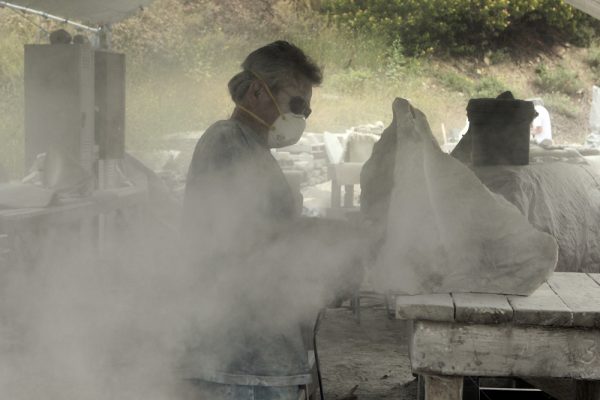
Photo by Ted Reckas.
In axing the long-lived stone carving program on the Laguna College of Art and Design campus, President Jonathan Burke said he acted to protect students, faculty and staff from possible health risks generated by fine stone dust.
His efforts to guard respiratory health also whipped up a storm of protest among loyal students and instructors. After all, the popular Saturday workshops open to the community had been ongoing in the same spot for 40 years.
Burke gave instructors Joe Sovella and Steven Lustig until June 30 to wrap up the program.
With students scrambling to finish their projects in Orange County’s last stone cutting yard, the impending closure also revealed rifts between some instructors over the program’s management that also may have contributed to its demise. Even so, instructors stressed that clutter and safety issues were fixable.
Burke disagrees and cited health hazards caused by silica present in some stones. While carvers wear protective respiratory gear, others on campus had no such protection. Saturdays are getting busier on the main campus with more community art classes underway, he said.
“I pulled into the parking lot last Saturday and was immersed in a cloud of dust. Marble dust is dangerous and I can’t allow students to be exposed to dust that is not only an irritant but a cause of silicosis,” Burke said in an email to stone carving instructors May 17.
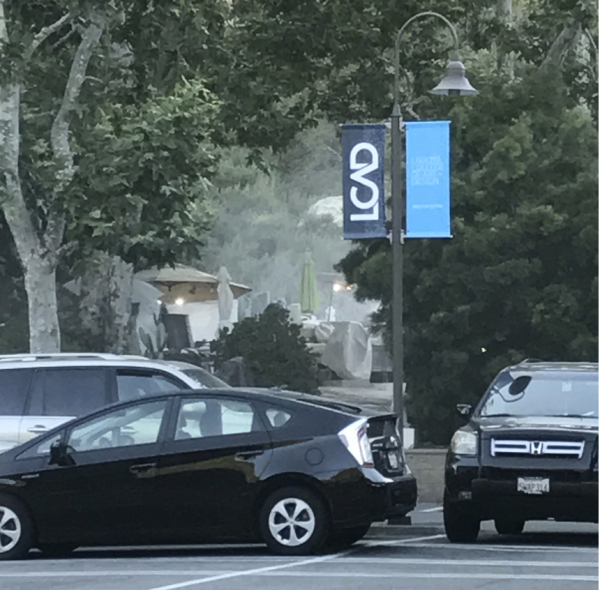
As students and instructors Joe Sovella and Steven Lustig, hustle to vacate the site on schedule, some are also questioning the decision given the class’s longevity.
“With all the new acquisitions of property for LCAD across the street from the main campus, I find it unbelievable that you cannot find a safe space for the sculpture program to continue,” Laguna Beach resident Jan Fritsen said in an email to administrators.
Fritsen pointed out that local residents back the school in “word and deed,” with financial support and acceptance of a pedestrian signal on Laguna Canyon Road, erected in lieu of a more expensive, less disruptive pedestrian overpass.
Another local, Max Isles, called the decision the end of an era. “Dust? If the school is really concerned about overall air quality, they should consider the thousands of cars passing by in the canyon every day,” he said.
Attorney Christy Joseph, whose husband took the stone sculpture class, pointed out the health risks inherent in exposure to inks, paints and solvents used in painting, printmaking, ceramics and photo processing. “It’s hard to imagine that LCAD’s response would be to end the art form instead of mediating unnecessary risks,” she wrote.
Local realtor Monica Harris Anderson praised the yard’s canyon location and considered signing up for the program again. “If there are health hazards, there should be solutions found. There are enough creative people in this community to figure out how to keep this gem here,” she said.
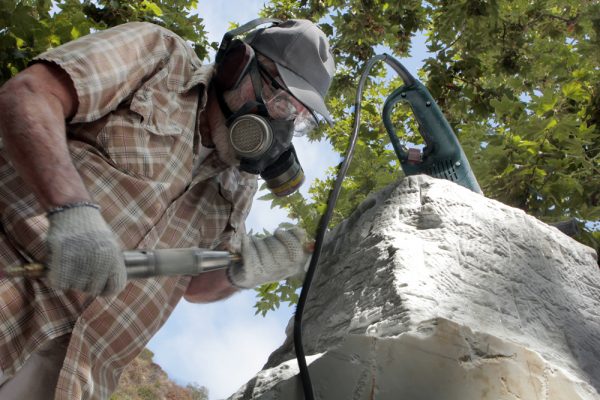
Sovella said suggestions for dust control, such as eliminating power tools, creating a temporary dust catching structure or a permanent dust control system were deemed by Burke as too costly and requiring expertise that neither the school nor the instructors possess.
Burke said that the instructors lack engineering expertise and to bring the program to OSHA standards would require too many resources.
Sovella said that silica concerns were unfounded, explaining that alabaster and marble contain small, non-dangerous amounts of silica. “Granite is silica-based and we don’t sculpt granite,” he said.
Sovella, whom Burke hired 30 years ago, reacted to the decision with sorrow and shock. He figures he’s taught 200 students, many who return again and again to take on projects of an much as 6,000 pounds. He worries about unfinished student projects and where to store remaining stones and supplies.
Sovella, who divides his time between Hawaii and Laguna Beach, is undergoing cancer treatment at UC Irvine Medical Center.
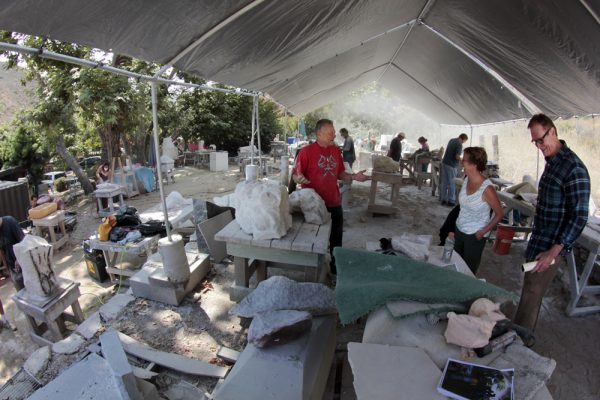
Lustig, a 10-year class instructor, said Burke has twice previously pushed to evict the program. He thinks dust is a ruse.
Burke said he had previously decreased the site’s size as classes kept encroaching into the area of other art classes.
However, both Lustig and another former instructor, Mike Flynn, decry the site’s increasingly messy appearance. “A gem for the arts community in Laguna was turned into Joe’s dump,” Lustig lamented. “We are about to lose a world-class stone cutting yard.”
While Sovella hired Flynn to teach in 1990, the instructors were mostly at odds about keeping order. “I got worn down trying to make it safe and successful,” said Flynn, who left three years ago, dismayed at hearing the entire crew referred to as “The Beverly Hillbillies.” He called the yard a safety risk.


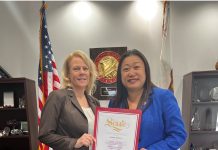

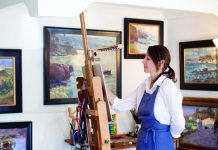
Please write to the Board of Trustees to have this decision reversed.
[…] recent decision to suddenly and abruptly close the 40 year old stone sculpting program offered on weekends at LCAD needs to be reviewed and […]